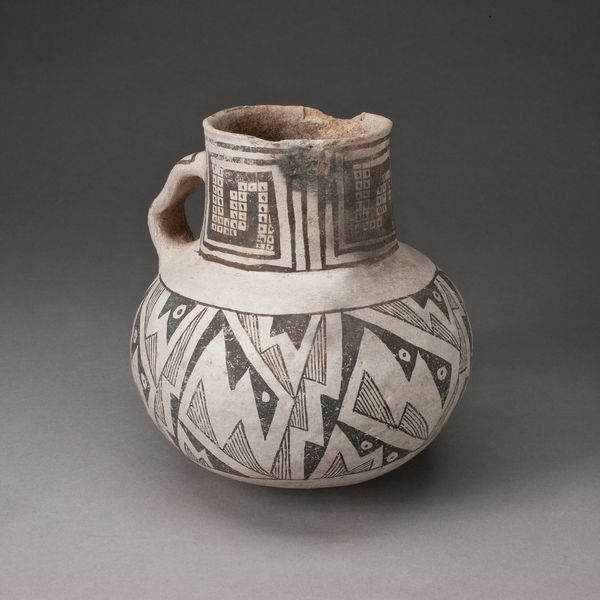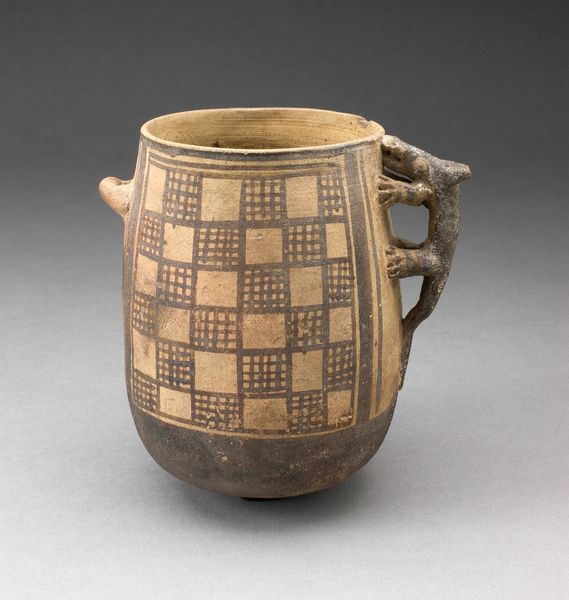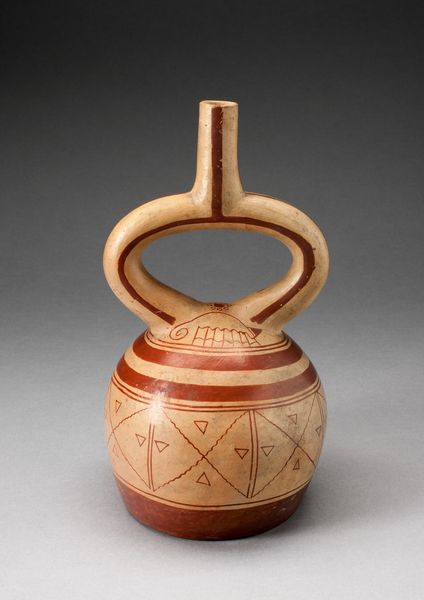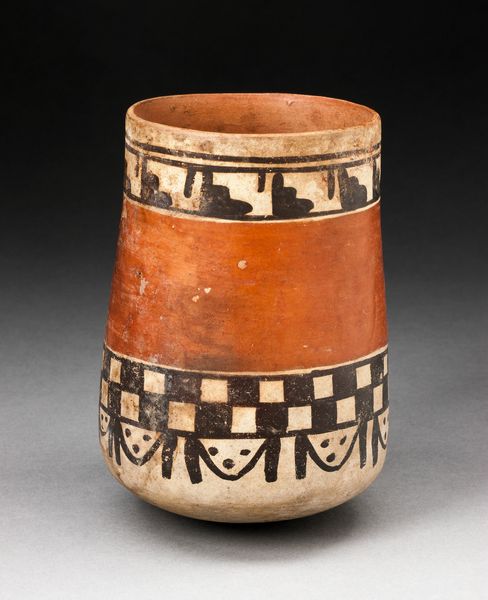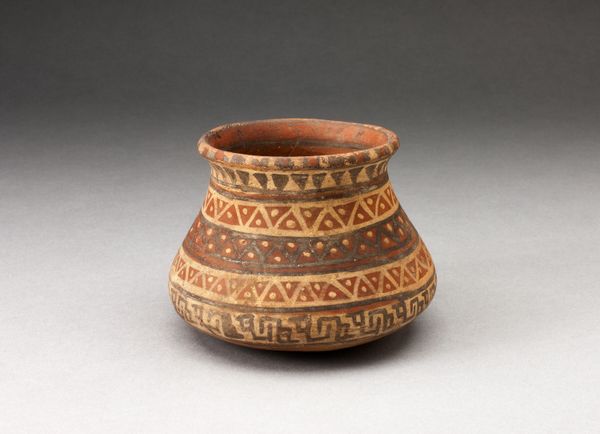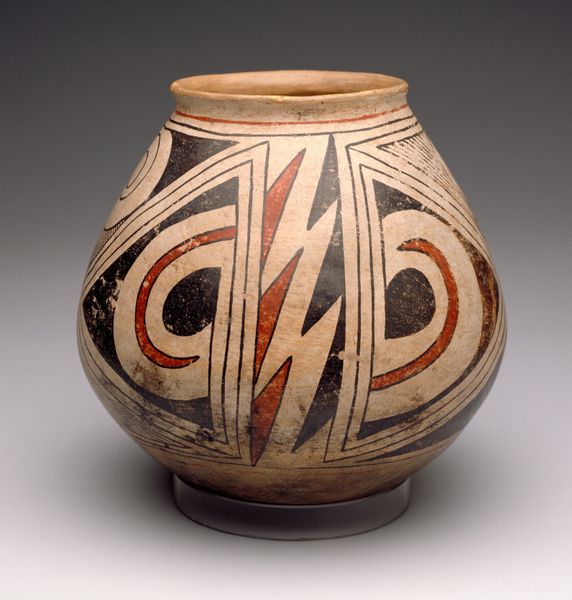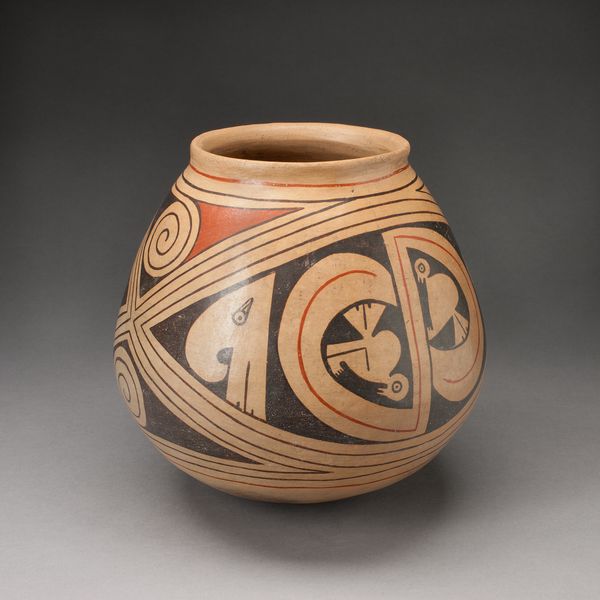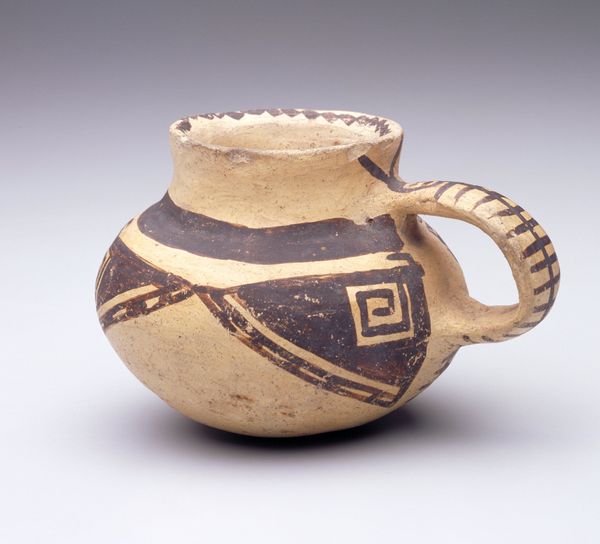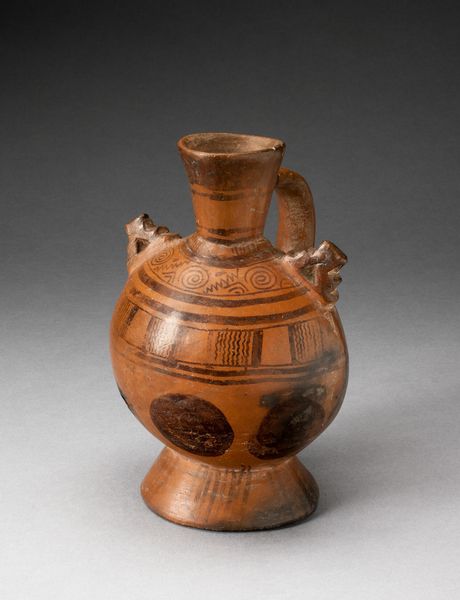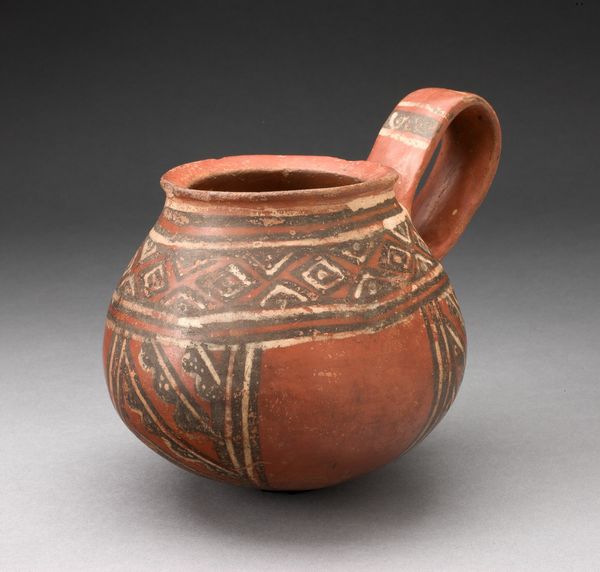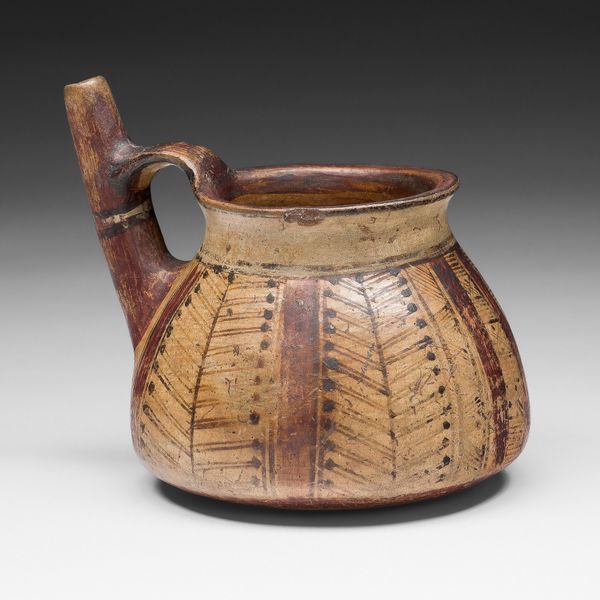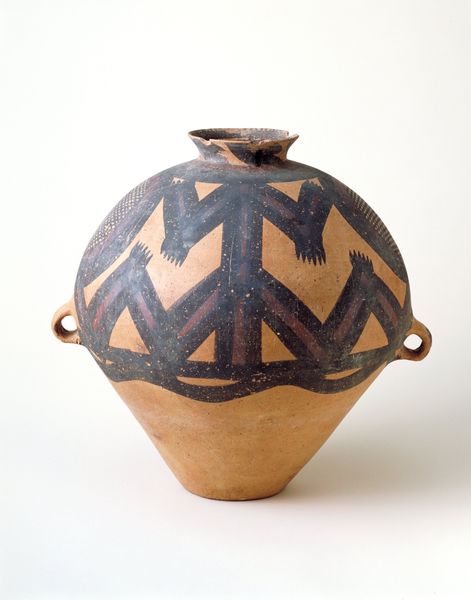
Pitcher with Stepped-Interlocking Motifs and Vertical Hatching Possibly 950 - 1400
0:00
0:00
ceramic
#
ceramic
#
geometric
#
ceramic
#
indigenous-americas
Dimensions: 19.1 × 15.2 cm (7 1/2 × 6 in.)
Copyright: Public Domain
Curator: This ceramic vessel, a pitcher crafted by the Ancestral Pueblo people, also known as Anasazi, is believed to have been created sometime between 950 and 1400. Currently, it resides here at The Art Institute of Chicago. Editor: It strikes me immediately as an object filled with dynamic tension. The stark contrast between the dark motifs and the creamy ceramic gives it a real visual punch. Curator: The geometric patterns are quite striking. We see these stepped interlocking designs framing a shape containing a stylized lightning bolt. This vessel presents us a fascinating lens through which to view the artistic and social history of the Pueblo peoples. Editor: Yes, these aren't just pretty shapes; they carry a profound weight. The zigzag motif of a lightning bolt is widely understood as a representation of power, energy, the connection between the earth and sky, often wielded by deities or spiritual entities. Then consider that it's framed in a square that perhaps represents the physical realm. The artist is making the power manifest in the vessel. Curator: And, if we look closely, the overall structure and use of design implies community roles that extend far beyond decoration. I am thinking about the labor division of the culture, from the harvesting and processing of clay to the application of the designs to its use as functional pottery in everyday life and ceremonial practices. The pitcher becomes a focal point, a public articulation of culture through utilitarian artwork. Editor: The hatching, almost like small rows of dashes, brings the motif to life. If it did represent lightning or water, then maybe that’s the rainfall aspect, creating a fuller sense of a powerful but perhaps a generous, nature. Even those arrow shapes at the pitcher’s shoulders, like the wings of birds or maybe feathers that evoke messages travelling great distances... it's rich! Curator: Certainly, the use of ceramic—a material readily available and expertly manipulated—speaks to both the pragmatism and resourcefulness within Pueblo society. The imagery on this vessel offers an important perspective of their cosmology and the central role this practical object had as an item that was probably used, seen, shared and treasured in community. Editor: For me, this piece highlights how art provides a durable language. What initially strikes us as simply 'decoration' deepens upon observation, becoming a wellspring of history and cultural identity expressed through lasting visual emblems.
Comments
No comments
Be the first to comment and join the conversation on the ultimate creative platform.
